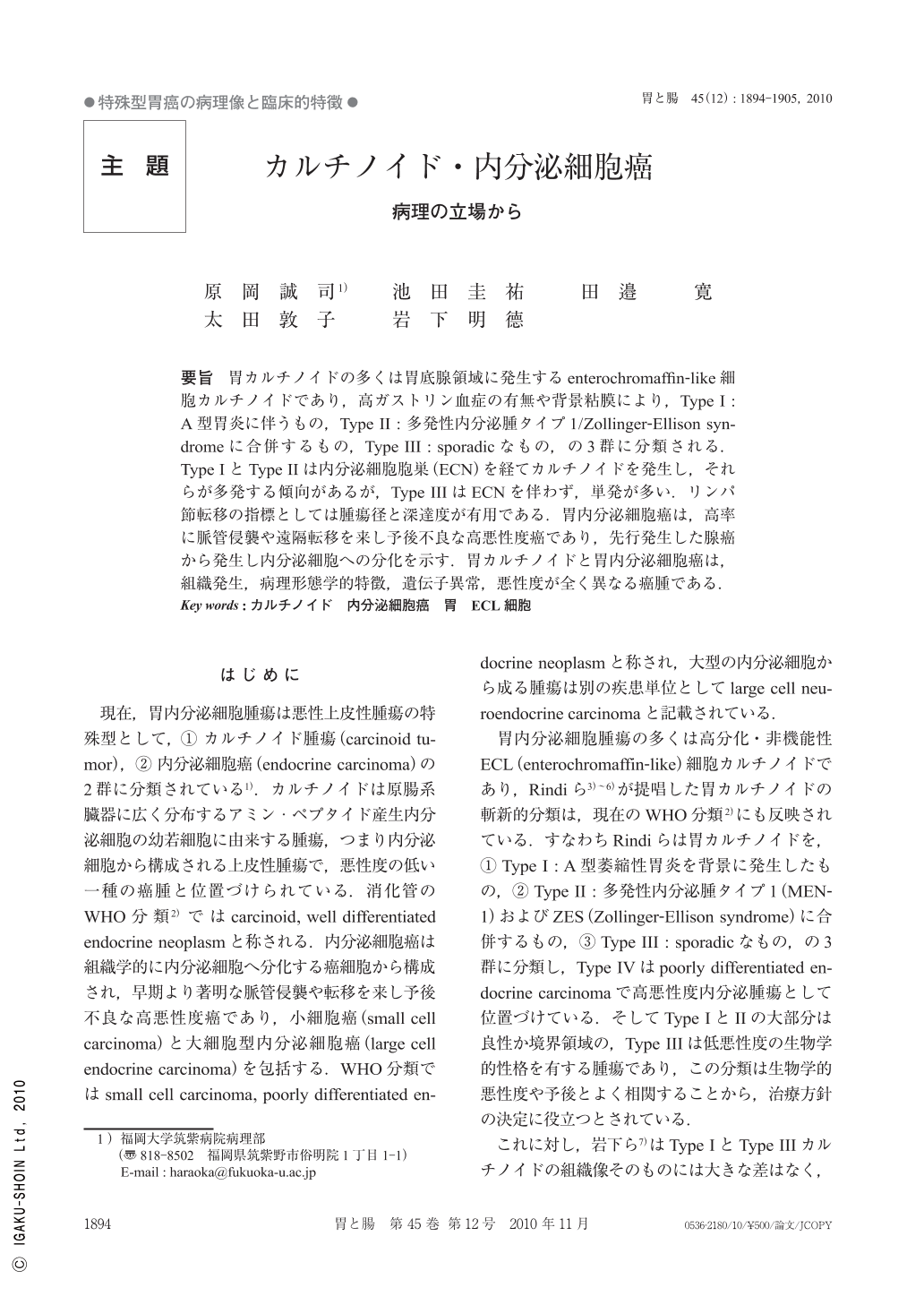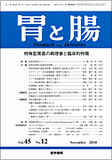Japanese
English
- 有料閲覧
- Abstract 文献概要
- 1ページ目 Look Inside
- 参考文献 Reference
要旨 胃カルチノイドの多くは胃底腺領域に発生するenterochromaffin-like細胞カルチノイドであり,高ガストリン血症の有無や背景粘膜により,Type I:A型胃炎に伴うもの,Type II:多発性内分泌腫タイプ1/Zollinger-Ellison syndromeに合併するもの,Type III:sporadicなもの,の3群に分類される.Type IとType IIは内分泌細胞胞巣(ECN)を経てカルチノイドを発生し,それらが多発する傾向があるが,Type IIIはECNを伴わず,単発が多い.リンパ節転移の指標としては腫瘍径と深達度が有用である.胃内分泌細胞癌は,高率に脈管侵襲や遠隔転移を来し予後不良な高悪性度癌であり,先行発生した腺癌から発生し内分泌細胞への分化を示す.胃カルチノイドと胃内分泌細胞癌は,組織発生,病理形態学的特徴,遺伝子異常,悪性度が全く異なる癌腫である.
Most carcinoid tumors of the stomach are enterochromaffin-like cell carcinoids arising from the fundic gland mucosa. Three distinct types have been recognized : Type I, associated with autoimmune chronic atrophic gastritis ; Type II, associated with multiple endocrine neoplasia type 1 and Zollinger-Ellison syndrome ; Type III, sporadic, i.e. not associated with hypergastrinaemia or autoimmune chronic atrophic gastritis. Type I and II carcinoids develop from endocrine cell nests and both lesions are usually multiple. Type III carcinoids are not associated with endocrine cell nests and are usually single. The useful predictive factors for lymph node metastases of carcinoids are tumor size and depth of tumor invasion. Endocrine carcinomas of the stomach are particularly aggressive, malignant tumors associated with highly angioinvasive, distant metastases, and poor prognosis. Endocrine carcinomas occur in preceding adenocarcinoma components and differentiate into the endocrine cell. The tumor development, pathological characteristics, genetic abnormalities, and malignant potential are quite different according to whether they are gastric carcinoids or endocrine carcinomas.

Copyright © 2010, Igaku-Shoin Ltd. All rights reserved.


